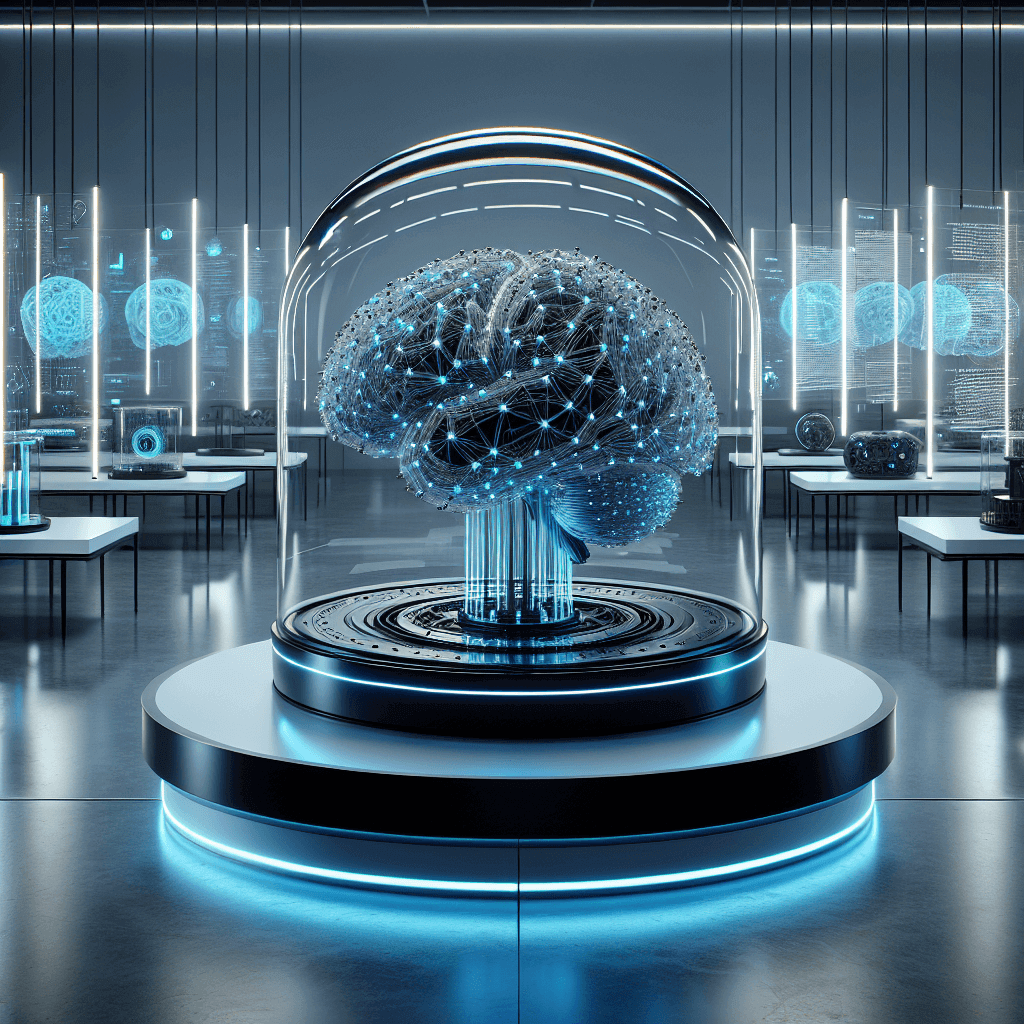Innovating Image Processing with Deep Learning

Innovating Image Processing with Deep Learning
In today’s fast-paced technological landscape, deep learning stands out as a transformative force in image processing. By leveraging artificial intelligence for enhanced visual data interpretation, industries are witnessing remarkable advancements. The integration of machine learning models like convolutional neural networks (CNNs) into traditional image processing workflows offers improved accuracy and efficiency. This blog post delves into the impact of deep learning on image processing, explores advanced techniques in image analysis, highlights contributions from Google Research AI, NVIDIA Corporation, and Stanford University, and provides a comprehensive look at real-world applications.
Introduction
The integration of artificial intelligence in visual data interpretation is revolutionizing various industries. At the heart of this transformation are neural networks in imaging, particularly convolutional neural networks (CNNs), which have become pivotal in advancing image processing capabilities. From healthcare diagnostics to autonomous vehicles, AI-driven computer vision applications are reshaping how we interact with and understand images.
Deep Learning Image Processing: A Paradigm Shift
Deep learning has fundamentally changed the landscape of image processing by enabling machines to learn from vast amounts of data. This shift allows for more accurate and efficient visual analysis compared to traditional methods. AI-driven computer vision leverages neural networks in imaging to identify patterns, classify images, and make predictions with unprecedented precision.
Convolutional Neural Networks Applications
CNNs are specifically designed for grid-like data such as images. They excel at learning spatial hierarchies of features through layers that perform convolution operations, pooling, and fully connected analysis. These capabilities make CNNs ideal for tasks like image classification, object detection, and segmentation. The applications of CNNs in image processing are vast and varied, impacting sectors ranging from medical imaging to retail.
For example, in the retail industry, CNNs are used to enhance customer experience by enabling product recommendation systems based on visual similarities and trend analysis. Similarly, in agriculture, CNNs assist in crop monitoring and disease detection through aerial imagery, optimizing yield management practices.
Enhancing Accuracy with AI-Driven Computer Vision
The integration of machine learning models like CNNs into traditional image processing workflows offers improved accuracy and efficiency. Deep learning image processing surpasses conventional methods by automating feature extraction and reducing the need for manual intervention. This automation improves precision and accelerates processing times, enabling real-time analysis across various sectors, including healthcare, automotive, security, and entertainment.
For instance, in autonomous driving, AI-driven computer vision systems utilize CNNs to interpret road signs, detect pedestrians, and predict vehicle movements, ensuring safer navigation. In healthcare, these technologies aid radiologists by automatically detecting anomalies in medical images, such as X-rays and MRIs, enhancing diagnostic accuracy and speed.
Advanced Techniques in Image Analysis
Transfer Learning
Transfer learning involves using a pre-trained model on a large dataset and fine-tuning it for specific tasks with smaller datasets. This technique reduces the time and resources needed to develop effective models from scratch. For example, transfer learning is extensively used in facial recognition systems to adapt generic face detection models to recognize individuals accurately.
Data Augmentation
Data augmentation techniques artificially expand training datasets by creating modified versions of images through rotations, translations, and other transformations. This helps improve model robustness and generalization, especially when dealing with limited data resources. In wildlife conservation, data augmentation aids in recognizing species from camera trap images under varying environmental conditions.
Generative Adversarial Networks (GANs)
Generative adversarial networks consist of two neural networks—the generator and the discriminator—that compete against each other to produce realistic synthetic images. GANs have found applications in creating high-resolution imagery for training purposes, enhancing medical imaging techniques, and even generating artistic content. They are instrumental in scenarios where annotated data is scarce or costly.
Contributions from Leading Research Entities
Google Research AI
Google Research AI has been at the forefront of deep learning advancements, particularly with its development of architectures like Inception networks and TensorFlow, an open-source machine learning framework. These contributions have democratized access to cutting-edge tools for researchers worldwide, accelerating innovations in image processing.
NVIDIA Corporation
NVIDIA’s contribution to deep learning image processing is largely attributed to their GPU technology, which significantly accelerates the training of neural networks. The company has also developed specialized software like CUDA and cuDNN that optimize AI computations on GPUs. This infrastructure is crucial for handling complex models used in real-time computer vision applications.
Stanford University
Stanford University’s research initiatives have produced pioneering work in deep learning methodologies, including advancements in CNN architectures such as ResNet and innovations in attention mechanisms. Their contributions to the field continue to inspire new approaches to solving challenging image processing tasks.
Real-World Applications
The impact of AI-driven computer vision extends across various domains:
- Healthcare: Beyond diagnostics, deep learning is used for surgical assistance, patient monitoring, and personalized treatment planning.
- Automotive: Besides autonomous vehicles, smart cameras in cars provide features like lane departure warnings and adaptive lighting systems.
- Security: Surveillance systems powered by AI can detect unusual activities and enhance public safety through real-time threat assessment.
- Entertainment: In film production, deep learning algorithms assist with visual effects creation, color grading, and even scriptwriting processes.
Challenges in Deep Learning for Image Processing
Despite its transformative potential, deep learning faces challenges that need addressing:
- Data Dependency: High-quality, labeled datasets are essential for training effective models. Obtaining such data can be expensive and time-consuming.
- Computational Resources: Training complex neural networks requires significant computational power, often involving specialized hardware like GPUs or TPUs.
- Model Interpretability: The “black box” nature of deep learning models makes it difficult to understand their decision-making processes, which is crucial for trust and accountability.
Future Directions
Looking ahead, the field of image processing with deep learning promises continued innovation. Researchers are exploring:
- Developing more efficient algorithms that require fewer resources.
- Creating interpretable AI systems that provide insights into their operations.
- Enhancing real-time processing capabilities to support dynamic applications such as augmented reality.
Conclusion
The intersection of deep learning and image processing is an exhilarating domain with vast potential. By leveraging neural networks, particularly CNNs, industries are unlocking new capabilities in visual data interpretation. The contributions from entities like Google Research AI, NVIDIA Corporation, and Stanford University continue to push the boundaries of what’s possible, paving the way for a future where AI-driven computer vision becomes ubiquitous.
As we look forward, addressing current challenges and exploring innovative techniques will be crucial to harnessing the full potential of deep learning in image processing. The journey is just beginning, and the possibilities are limitless.
Frequently Asked Questions
1. What makes convolutional neural networks (CNNs) suitable for image processing?
Answer: CNNs are specially designed to process grid-like data such as images. They automatically learn spatial hierarchies of features through layers that perform convolution operations, pooling, and fully connected analysis. This design makes them ideal for tasks like image classification, object detection, and segmentation.
2. How does AI-driven computer vision enhance accuracy in industries?
Answer: AI-driven computer vision enhances accuracy by automating feature extraction and reducing the need for manual intervention. This improves precision and accelerates processing times, enabling real-time analysis across various sectors, including healthcare, automotive, security, and entertainment.
3. What are some advanced techniques used in image analysis with deep learning?
Answer: Advanced techniques include transfer learning, data augmentation, and generative adversarial networks (GANs). Transfer learning leverages pre-trained models for specific tasks; data augmentation creates modified images to improve model robustness; GANs generate realistic synthetic images by using competing neural networks.
4. What challenges does deep learning face in image processing?
Answer: Challenges include data dependency, the need for substantial computational resources, and model interpretability issues. These factors can hinder the development and deployment of effective AI systems.
5. How are leading research entities contributing to advancements in this field?
Answer: Entities like Google Research AI, NVIDIA Corporation, and Stanford University contribute through architectural innovations, hardware acceleration, and foundational algorithmic breakthroughs. Their work drives progress in developing more efficient, interpretable, and powerful image processing technologies.
